How to Solve Checking File System on C Error in Windows
Checking File System on C message is a warning when Windows detects an issue with the file system on your C drive (typically the primary drive where Windows is installed). This message indicates that there may be corrupted or damaged files, bad sectors, or other issues that need attention to prevent potential data loss or system instability.
What is a Check File System on C Message?
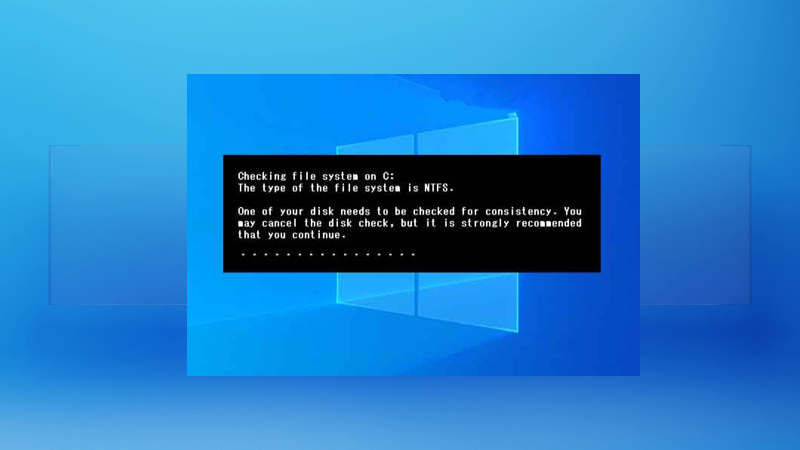
The Check File System on C message is a prompt from Windows that suggests running a disk check utility, such as CHKDSK (Check Disk), to scan and repair any problems with the file system on the C drive. This message can appear during startup, Shutdown, or when attempting to access specific files or folders.
It serves as a precautionary measure to ensure the integrity of your data and prevent potential system crashes or performance issues.
Causes for Check File System on C
Several potential causes can trigger the “Check File System on C” message:
Corrupted File System
A corrupted file system can result from various factors, such as power outages, software conflicts, malware infections, or hardware failures. Corrupted files or system files can lead to inconsistencies in the file system, prompting Windows to recommend a disk check.
Bad Sectors Hard drives
A disk sector hard drive can develop bad sectors over time, which are areas on the Disk that cannot be read or written reliably. Bad sectors can cause data corruption and file system issues, leading to the Check File System on C message.
Incorrect Shutdown
If your computer is not shut down properly (e.g., due to a power outage or forced restart), it can leave the file system in an inconsistent state, triggering the need for a disk check.
How to Fix Checking Files System on C on Windows?
Shut Down Your Computer Properly
Before attempting any repairs, it’s crucial to shut it down properly. An improper shutdown can exacerbate the issue and potentially lead to further data corruption or file system problems.
Follow the standard procedure for shutting down your computer to ensure a clean shutdown.
Start Button > Power Button Icon > Shutdown
Check File System Errors
The primary solution to address the “Check File System on C” message is to run the CHKDSK (Check Disk) utility. This tool scans the file system for errors and attempts to repair any issues.
Here’s how to run CHKDSK:
Open the Command Prompt as an administrator.
Type chkdsk C:/f /r and press Enter. ( Replace C with the appropriate drive letter if your Windows installation is on a different drive.
The /f parameter instructs CHKDSK to fix any errors it finds, and /r locates bad sectors and attempts to recover readable information.
CHKDSK will inform you if a disk check needs to be scheduled for the next restart. If prompted, select “Yes” to schedule the disk check.
Restart your computer, and CHKDSK will run automatically during the boot process, scanning and attempting to repair any issues found on the C drive.
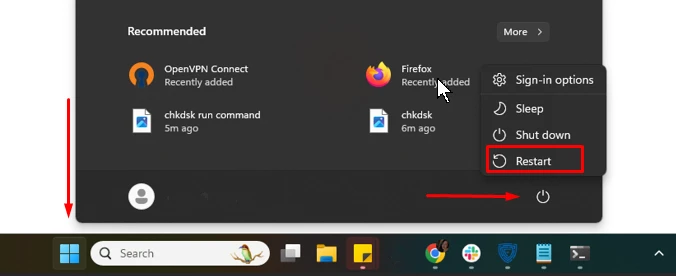
Start button > Power Button > Restart
If you’re looking for a premium solution to repair a corrupted file system with a clean copy and monitor your system for any bad sector hard drives that need repair and replacement, consider using Fortect. It’s an all-one PC solution with Malware real protection, which is also the reason for corrupted file systems or Checking File System on C errors on your Windows PC.
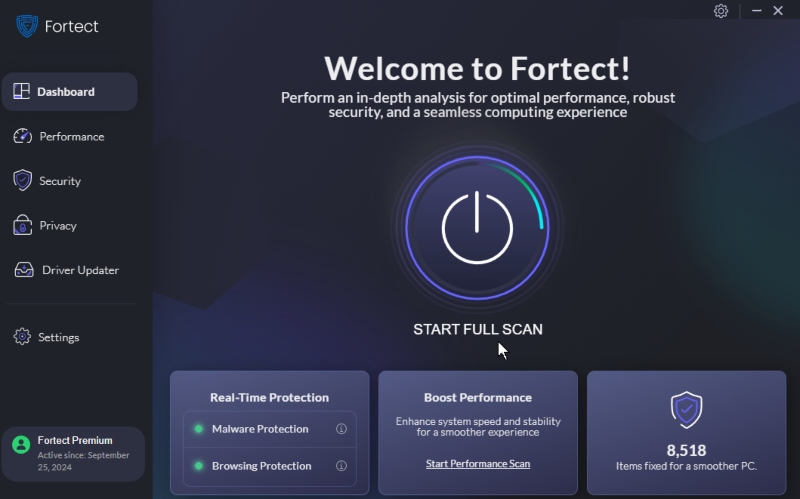
Download and Install Fortect now.
Find and Fix Bad Sectors
Bad sectors on your hard drive can cause file system errors and contribute to the “Check File System on C” message. To find and fix bad sectors, you can use the CHKDSK utility with the /r parameter, as mentioned earlier. Alternatively, you can use third-party disk utility tools specializing in detecting and remapping bad sectors.
Diable Autodisk Check Manually
If you don’t want Windows to automatically check the file system every time you start your computer, you can turn off the Autodisk Check feature manually. However, turning off this feature may prevent Windows from detecting and fixing potential issues with your file system.
To disable Autodisk Check, follow these steps:
- Start Button > Type cmd > Run as Administrator > Black screen
2. Type fsutil dirty query C: and press Enter. (Replace “C:” with the appropriate drive letter if necessary.)
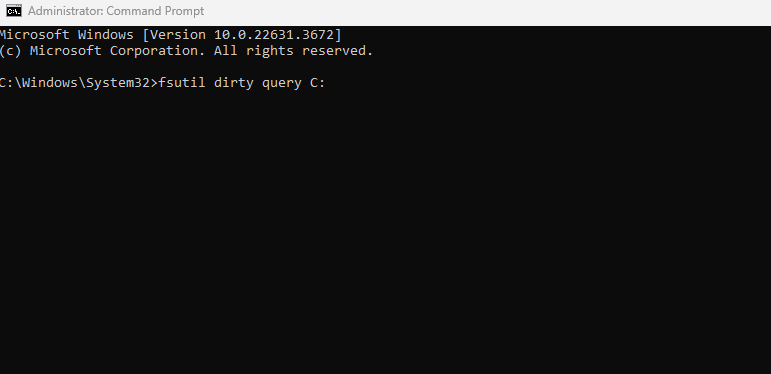
3. If the output shows “The volume is not dirty,” Autodisk Check is disabled. If it shows “The volume is dirty,” proceed to the next step.
4. Type fsutil dirty set C: and press Enter to disable Autodisk Check for the specified drive.
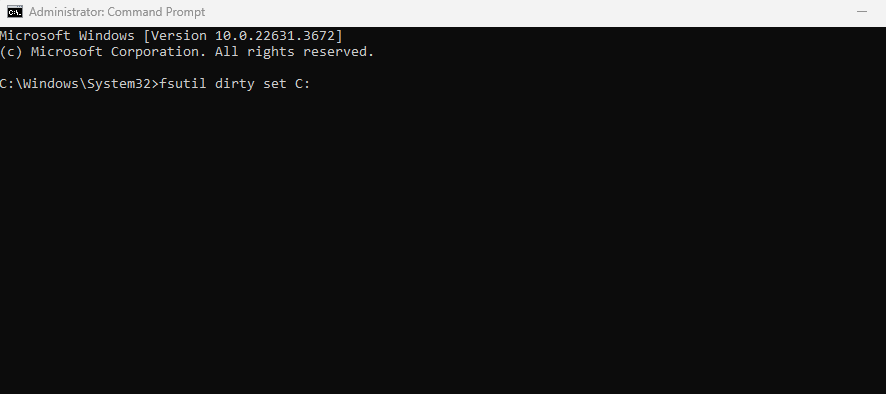
Conclusion
The “Check File System on C” message can be frustrating and potentially concerning, but it’s essential to address it promptly to prevent data loss or system instability. By following the steps outlined above, such as running CHKDSK and CHKNTFS and addressing bad sectors, you can often resolve file system issues and ensure the integrity of your data.
Remember, prevention is always better than cure. Regularly maintaining your computer, keeping your software and drivers up-to-date, and using reliable security solutions can help minimize the chances of encountering file system errors in the first place.
Fortect, with its comprehensive tools for hardware maintenance, security, and performance optimization, can be an invaluable ally in keeping your PC running smoothly and safeguarding your data.




